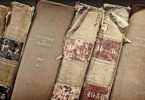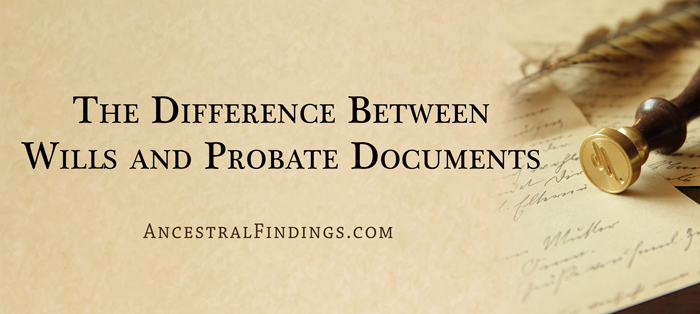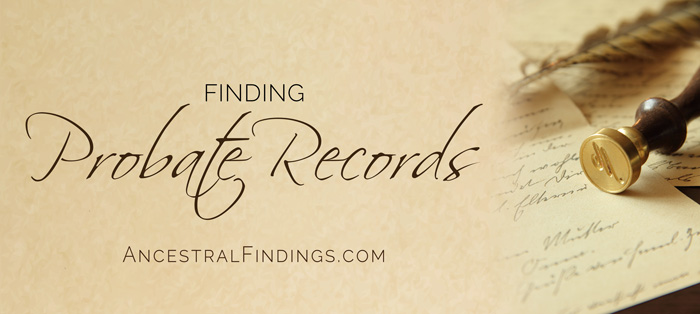A truly potentially rich source of genealogical information is probate records. Whenever an ancestor crossed over to the other side, they usually left some record of their estate. This could be in the form of a will, an inventory of their estate, or court records of relatives or other potential heirs who believed they had a claim on the estate. Sometimes, you will even find old newspaper records of people petitioning the court to be named the executor or heir of someone's estate who crossed over intestate (without a will). All of these records can potentially contain tons of genealogical gems. Therefore, it is worth your time and effort to look for and study them closely if you find them. You will be so glad you did.
Wills are the Primary Type of Probate Record
While not everyone made a will (and not everyone who made one has one that still exists today), those who did often named family members, some of which you may not have known and others whom you may have suspected were related without concrete proof. They will offer you this proof. It can also offer you a look at other relatives and in-laws with whom your ancestor was close but not directly related (such as aunts, uncles, cousins, step-relatives, etc.), as well as friends and neighbors who your ancestor treasured. You may also discover what causes were near and dear to your ancestor if any part of your ancestor's estate was left to that cause or causes in the will.
You will also learn about what your ancestor owned if belongings are listed. Sometimes, all a person would be to leave each person named in the will a sum of money, assuming the relatives and loved ones they left behind would work out divvying up the personal belongings themselves. While it is fascinating to get a picture of your ancestor's financial situation, seeing the actual things they owned is even more interesting.
Also fascinating is how you can imply a personal relationship between the ancestor and the beneficiary beyond their familial one based on individual material objects they were left in the will. Learning who was named executor or executrix in the will tells you who your ancestor trusted the most to handle their affairs as they wished.
It is worth it to look up wills to determine and confirm family relationships and build a better picture of your ancestor's life. You can often find wills at the county courthouse where your ancestor lived (where you will find your ancestor's original mark or signature!). If the county records burned since your ancestor crossed over, a will may no longer exist, though don't discount finding a copy of it tucked amongst the papers of people in the direct descent of their heirs. Ancestry.com also has a wonderful collection of wills from all time periods in the United States and all states and territories (as such, things began being recorded).
What is Useful About Estate Inventories?
While not every ancestor will have a will (or a will that still exists), there might be an estate inventory for them. Estate inventories were historically taken for people who did not have wills after they crossed to the other side. Estate inventories are exactly what they say they are… a full list and accounting of a deceased ancestor's belongings and approximately how much each individual item was worth. These were taken by someone appointed by the court, who would be impartial in their valuation and then filed with the court as an official document.
Why were estate inventories important? They were typically done for taxation purposes, so the proper amount of tax could be assessed to the deceased individual's estate before the estate items were distributed to heirs. It was also an accounting of what comprised the estate at the time the person crossed to the other side so that any potential heirs would not be able to take any item for themselves before the estate was taxed and before other heirs had a chance also to make claims on certain items on the estate. Estate inventories were done to ensure the local, state, and national governments got their share of the estate in taxes and to keep the potential heirs of an intestate person honest when it came time to distribute the estate.
Estate inventories are fascinating because they provide a detailed breakdown of exactly what your ancestor owned and how much it was worth when they crossed to the other side. If you have always wondered what the inside of your ancestor's house looked like, what they used in their day-to-day existence, what was important to them, how much money they had, or what type of lifestyle they lived, an estate inventory will give you that information.
Imagine wandering through a long-gone ancestor's home, touching their belongings, rifling through their things, looking at the things that defined who they were as a person, and learning more about them as a person, including their tastes, what was important to them, and what type of lifestyle they led. This is what an estate inventory will do for you.
Therefore, do not be disappointed if there is no will for your ancestor's estate. Look among court probate documents for an estate inventory. If you find one, read it closely. Don't just skim it. You want to take in all the details of their personal life and lifestyle the inventory provides. You might find some surprises, such as photographs you never knew existed, and can try going down the lines of that person's heirs to the present day to discover if someone still has those things. At the least, you will learn things that are new to you and incredibly fascinating about your ancestor.




